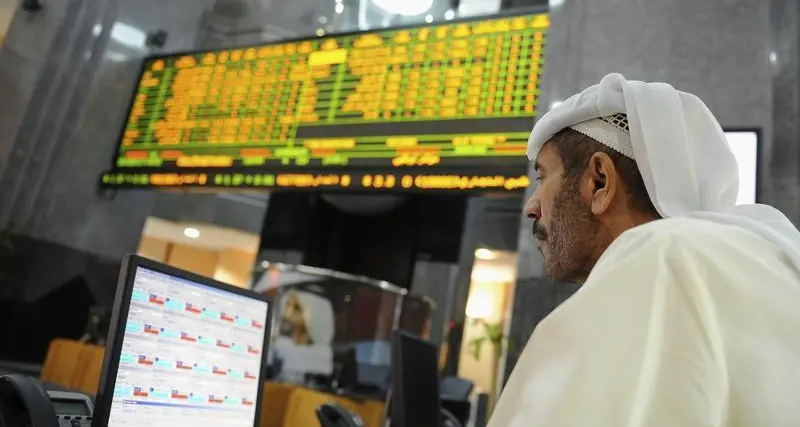National Bank of Oman (NBO) The Long-Term Foreign Currency Rating (FCR) has been maintained at BBB but lowered the Short-Term FCR to A3 from A2 in line the recent downgrade of the Sovereign Rating for the Sultanate of Oman (BBB/A3/Stable). CI Ratings has affirmed the Banks Financial Strength Rating (FSR) at BBB with a Stable Outlook. NBOs ratings are underpinned by its sound financial metrics in respect to capital adequacy, loan asset quality and profitability. NBOs main rating constraints are the stretched net loans to total customer deposits ratio and the customer concentrations seen in both the loan portfolio and deposit base.
Oman Arab Bank (OAB) The banks Long-Term Foreign Currency Rating (FCR) was lowered to BBB- from BBB following the recent downgrade of the Sovereign Rating for the Sultanate of Oman (BBB/A3/Stable). The sovereign rating action reflects the countrys deteriorating net external asset position, the continued weakening of fiscal and external balances as well as the declining government financial assets that cover the large budget deficit. The Short-Term FCR is however affirmed at A3 and the Outlook is maintained at Stable. The Support Rating is maintained at 2, reflecting the high likelihood of support from the government, as well as from its strategic and relatively sound major shareholders in Jordan.
CI Ratings has affirmed the Banks Financial Strength Rating (FSR) at BBB- with a Stable Outlook. CI will however be undertaking a full review of OABs and all other Omani banks FSRs in Q1 2018 to ascertain the adverse impact of Omans weaker macro-economic fundamentals and difficult operating environment on their financial metrics. The Banks ratings are underpinned by the sound loan asset quality and the solid and improved capital ratios. The ratings also reflect the strong corporate franchise, which provides the Bank with a deep customer deposit base. While liquidity ratios were better than the peer group average, they remained fairly tight. This and the high customer concentrations in both loans and customer deposits are constraints on the ratings, in line with its peers.
Bank Muscat Bank Muscats (BM) Long-Term Foreign Currency Rating (FCR) was lowered to BBB from BBB+ and Short-Term FCR to A3 from A2 in line with the recent downgrade of the Sovereign Rating for the Sultanate of Oman. The Stable Outlook for the FCR is maintained. The sovereign rating action reflects the countrys deteriorating net external asset position, in addition to the continued weakening of fiscal and external balances, and the declining government financial assets to cover the large budget deficit. The Support Rating is affirmed at 2 as BM is the largest bank in the country, with high levels of direct and indirect government ownership.
CI Ratings has affirmed the Banks Financial Strength Rating (FSR) at BBB+ with a Stable Outlook. CI will however be undertaking a full review of BMs and all other Omani banks FSRs in Q1 2018 to ascertain the adverse impact of Omans weaker macro-economic fundamentals and difficult operating environment on their financial metrics. Bank Muscats ratings are underpinned by its good financial metrics in terms of loan asset quality and solid and improving Basel III capital ratios. The ratings also reflect its flagship status, together with its majority government ownership and its significant share of both assets and deposits in the banking system. In common with its peers, the Banks ratings are constrained by the tight loan-based ratios, which largely reflect the small size of the Omani market, as well as its relatively low savings rate and the moderately high customer deposit concentration.
Ahli Bank The banks Long-Term Foreign Currency Rating (FCR) was lowered to BBB from BBB+ and the Short-Term FCR to A3 from A2. The Stable Outlook for the FCR is maintained. The Support Rating of 3 is affirmed, underscoring the high likelihood of support from the Omani authorities and from the strategic shareholder Ahli United Bank (AUB) in case of need. The FCRs for all Omani banks were adjusted following the recent downgrade of the Sovereign Rating for the Sultanate of Oman (BBB/A3/Stable). The sovereign rating action reflects Omans deteriorating net external asset position, the continued weakening of fiscal and external balances, as well as the declining government financial assets to cover the large budget deficit.
CI Ratings has affirmed the Banks Financial Strength Rating at BBB, which is also maintained on a Stable Outlook. Although Omans operating environment remains challenging, AB has adeptly managed its balance sheet in the face of tighter liquidity conditions and elevated credit risk in the economy. This testifies to a well managed institution following a prudent credit policy and executing a clear business strategy. Risk management benefits from the expertise provided by AUB under the five-year renewable Technical and Management Services Agreement (TMSA). The Banks ratings continue to be underpinned by the TMSA with AUB, the very sound loan asset quality, as well as the recent AT 1 capital increase, and more than satisfactory profitability at all levels. The main constraints on the ratings are the Banks standalone tight liquidity position, although this is gradually improving and mitigated by ample committed lines of credit. The other rating constraints are ongoing customer deposit concentrations and low non-interest income coupled with margin compression. The challenging operating environment due to the significant fall in oil price is also a rating constraint.
Bank Sohar The banks Long-Term Foreign Currency Rating (FCR) was lowered to BBB- from BBB following the recent downgrade of the Sovereign Rating for the Sultanate of Oman. The sovereign rating action reflects the countrys deteriorating net external asset position, the continued weakening of fiscal and external balances, as well as the declining government financial assets that cover the large budget deficit. The Banks Short-Term FCR is affirmed at A3 and the Stable Outlook is maintained. The Support Rating of 2 is also maintained, reflecting the sizeable government ownership and the high likelihood of support from the government in the case of need.
CI Ratings has affirmed the Banks Financial Strength Rating (FSR) at BBB- with a Stable Outlook. CI will however be undertaking a full review of Bank Sohars and all other Omani banks FSRs in Q1 2018 to ascertain the adverse impact of Omans weaker macro-economic fundamentals and difficult operating environment on their financial metrics. Bank Sohars ratings are largely underpinned by its best in the peer group loan asset quality indicators with the lowest NPL ratio and full loan-loss reserve, as well as a good effective NPL coverage ratio, and good total capital to total assets ratio. The main constraints to the ratings, in common with its peers, are the tight liquidity ratios and the high customer concentrations in the deposit base. Another constraint on the Banks ratings is the declining profitability ratios, although these remained satisfactory in 2016.
Although oil prices have rallied from their low point, the state budget continues to be in deficit while the government remains focused on reducing expenditure and maximising non-oil and gas revenues. The ongoing and highly negative impact of lower oil prices on the Omani economy and on public finances has in turn affected business conditions especially for Omani corporates. Despite heightened credit risk in the economy, the generally good loan asset quality of the banks saw marginal improvement at end Q3 2017. Loan based liquidity indicators of the banking sector however remained tight, with credit extension staying slightly ahead of deposits expansion. This is likely to be a continuing problem over the medium term, partly reflecting the governments fiscal constraints and its limited capacity to inject liquidity. Although government deposits were up marginally at end Q3 2017 from 2016, they formed a slightly lower but still sizeable 26.4 per cent of total deposits. Profitability indicators are also likely to remain constrained by rising funding costs.
2018 CPI Financial. All rights reserved. Provided by SyndiGate Media Inc. (Syndigate.info).











